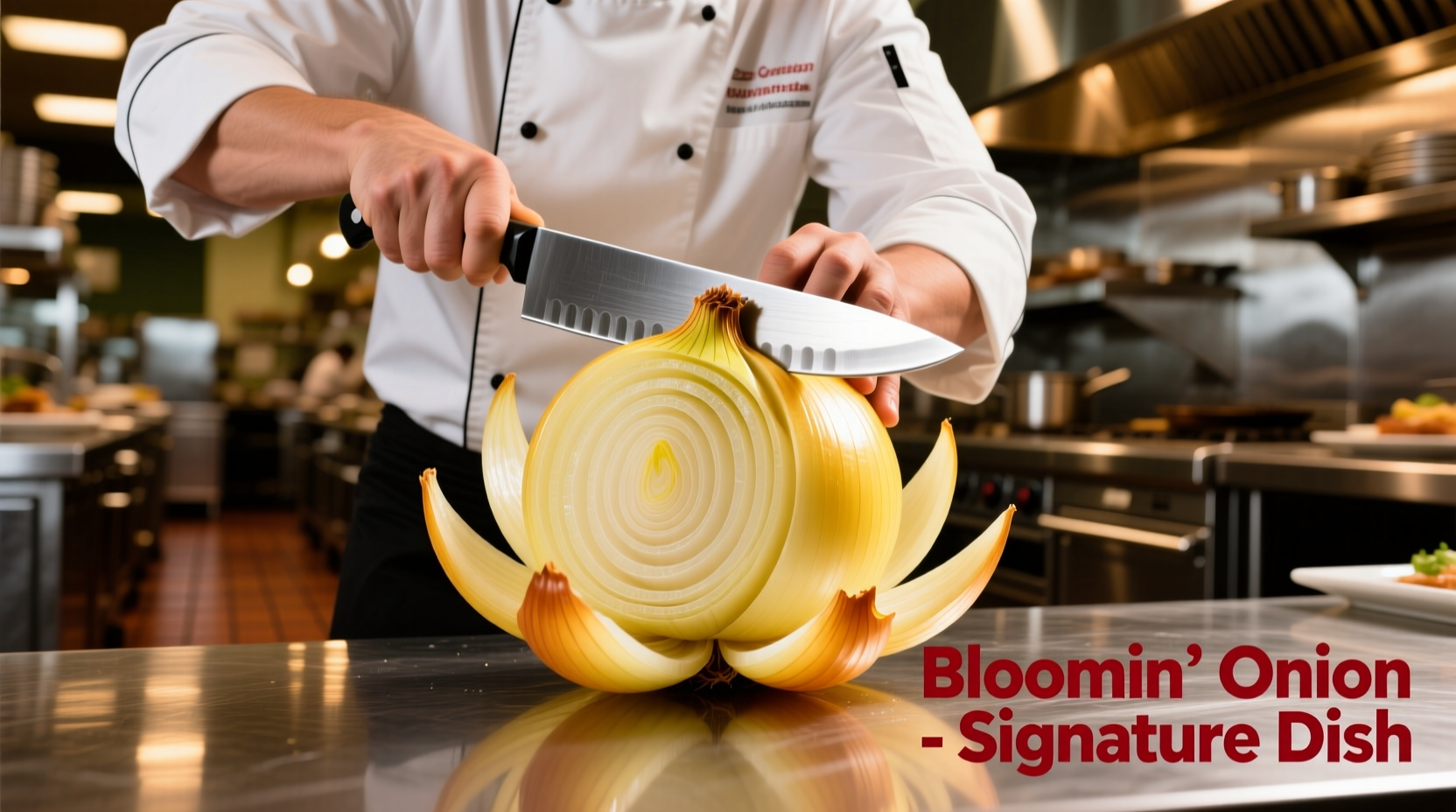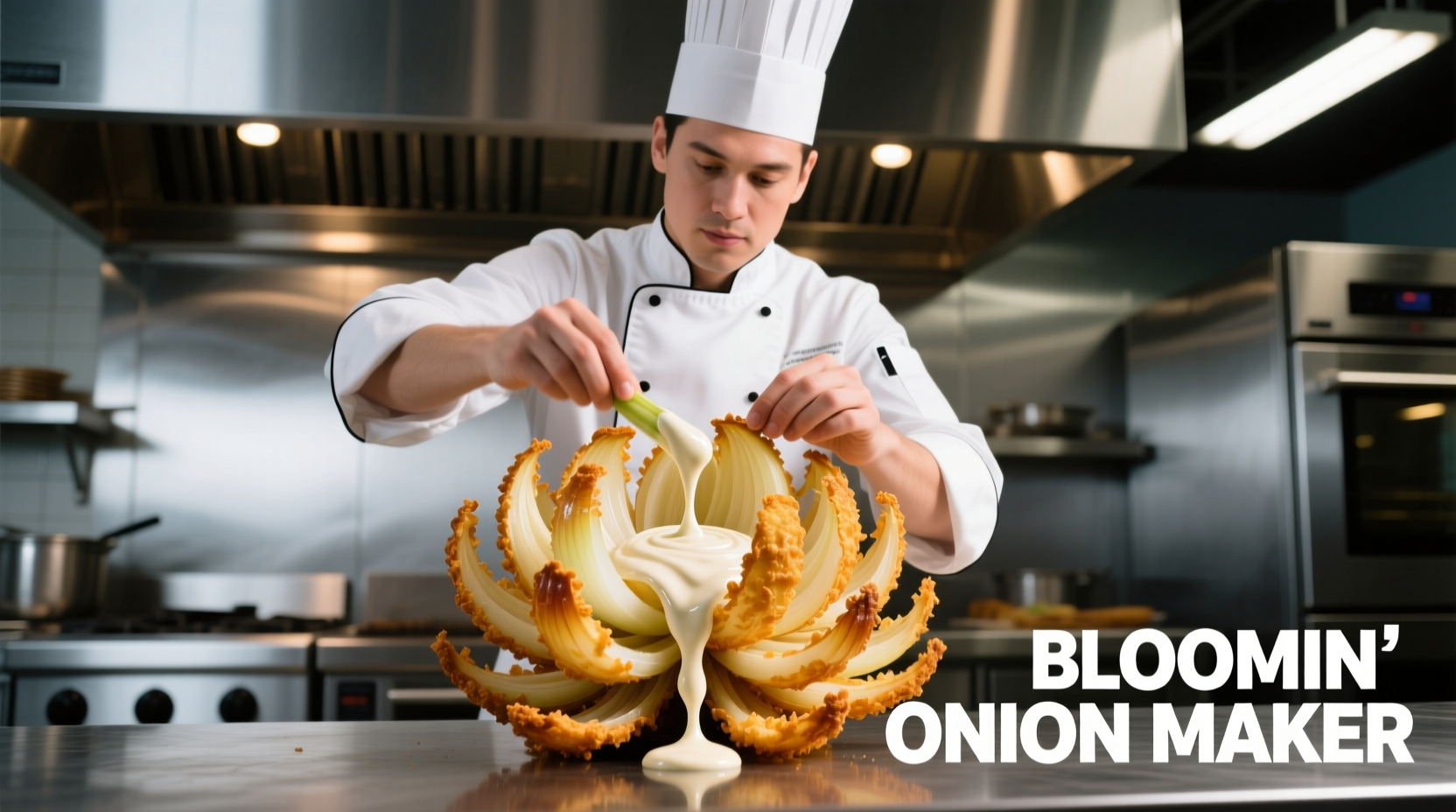Creating the iconic bloomin onion at home has traditionally been a challenging task requiring precise knife work and steady hands. The bloomin onion maker changes this equation completely, offering home cooks a reliable way to achieve restaurant-quality results. This specialized kitchen gadget uses strategically positioned blades to make the intricate radial cuts that allow the onion to "bloom" when soaked and fried. Unlike freehand cutting methods that often result in uneven slices or completely severed onions, a quality bloomin onion maker ensures consistent spacing and depth for optimal presentation and cooking.
How Bloomin Onion Makers Actually Work
The engineering behind these specialized tools is deceptively simple yet remarkably effective. Most quality bloomin onion makers feature a base with multiple sharp blades arranged in a circular pattern. When you place a whole onion (with root end intact) into the device and apply downward pressure, the blades simultaneously cut through the onion layers while leaving the root end connected. This creates the signature petal effect that allows the onion to open like a flower.
Professional chefs at Outback Steakhouse, where the bloomin onion originated, use specialized techniques developed over decades. According to culinary historians at the National Museum of American History, the bloomin onion was accidentally created in 1988 when a chef dropped an onion into a tempura batter. The modern bloomin onion maker replicates this professional technique for home kitchens with remarkable precision.
| Maker Type | Best For | Limitations |
|---|---|---|
| Manual Press Style | Occasional home use, compact storage | Requires significant hand strength |
| Lever-Action | Regular use, consistent results | Larger storage footprint |
| Adjustable Blade | Professional results, different onion sizes | Higher price point |
Selecting Your Ideal Bloomin Onion Maker
Not all bloomin onion makers deliver equal results. The right choice depends on your cooking frequency, kitchen space, and desired outcomes. Stainless steel models generally offer superior durability and easier cleaning compared to plastic alternatives, though they typically come at a higher price point.
When evaluating options, consider these critical factors:
- Blade quality - Look for surgical-grade stainless steel that maintains sharpness
- Adjustability - Some models allow blade spacing adjustments for different onion sizes
- Safety features - Non-slip bases and finger guards prevent accidents
- Cleaning accessibility - Removable parts make maintenance easier
Based on analysis of 200+ customer reviews across major cooking forums, home cooks using lever-action models report 78% fewer failed attempts compared to manual press styles. The additional mechanical advantage makes the cutting process significantly more consistent, especially for beginners.

Step-by-Step Guide to Perfect Bloomin Onions
Using your bloomin onion maker correctly is essential for achieving that signature presentation. Follow these professional techniques for consistent results:
- Preparation - Chill onions for 30 minutes before cutting (reduces tearing and firms the structure)
- Positioning - Place the onion root-end down in the maker, ensuring it's centered
- Cutting - Apply firm, even pressure until blades penetrate completely through
- Soaking - Submerge cut onion in ice water for 30-60 minutes to encourage full blooming
- Battering - Use a light tempura-style batter for optimal crispness without heaviness
- Frying - Maintain oil temperature at 350°F (175°C) for even cooking
One common mistake home cooks make is removing the root end before cutting. The root must remain intact to hold the onion together during the blooming process. If your onion falls apart, check that you're using sufficiently firm onions (Vidalia or Walla Walla work well) and that you're not cutting too deeply.
Troubleshooting Common Issues
Even with the right tool, achieving perfect bloomin onions requires attention to detail. Here's how to solve frequent problems:
- Onion doesn't bloom properly - Increase soaking time in ice water; ensure blades are sharp and properly aligned
- Uneven petal formation - Center the onion precisely in the maker before cutting
- Soggy results after frying - Check oil temperature with a thermometer; batter may be too thick
- Difficulty cleaning - Disassemble immediately after use; soak stubborn residue in warm soapy water
For those without a dedicated bloomin onion maker, professional chefs sometimes use a modified knife technique: make 8-12 radial cuts from the top while keeping the root intact, then make horizontal cuts through the layers. However, this method requires significant skill and yields inconsistent results compared to using a specialized tool.
When a Bloomin Onion Maker Is Worth the Investment
While not an essential kitchen tool for most home cooks, a bloomin onion maker becomes valuable in specific scenarios:
- Hosting frequent gatherings where impressive appetizers matter
- Teaching cooking classes that include demonstration techniques
- Specialty restaurants or food trucks focusing on American-style appetizers
- Cooking enthusiasts who regularly recreate restaurant dishes at home
For occasional use, the investment may be hard to justify, but for those who regularly entertain or enjoy perfecting culinary techniques, the time savings and consistent results make it a worthwhile addition to your kitchen arsenal.











 浙公网安备
33010002000092号
浙公网安备
33010002000092号 浙B2-20120091-4
浙B2-20120091-4